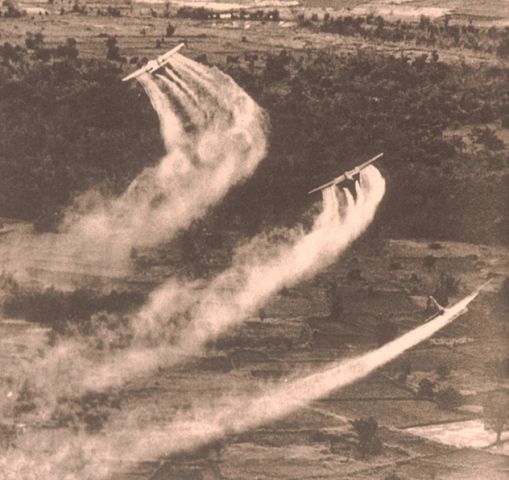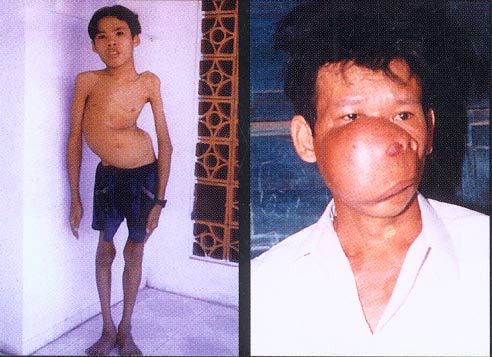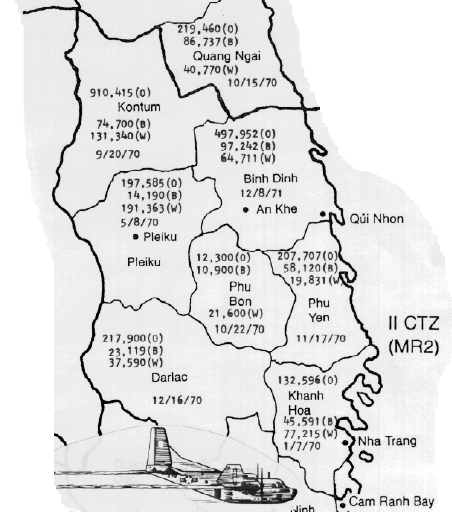|
During the Vietnam War, between 1962 and
1971, herbicides were used during warfare to defoliate the hiding places of the Viet Cong guerillas and the North Vietnamese
Army. Over 77 million liters of herbicide was sprayed over South Vietnam. The herbicides used were called the “Rainbow
herbicides”. The most infamous of these herbicides used was Agent Orange.

Agent
Orange
Agent Orange was given its name from the color of the orange striped US barrels it was shipped in. It is a mixture
of two phenoxy herbicides, 2,4-dichlorophenoxyacetic acid (2,4-D) and 2,4,5-trichlorophenoxyacetic acid (2,4,5-T). These herbicides were developed by both US and British intelligence in order to control the use of broadleaf plants.
It destroys the broadleafed plants by sparking rapid, uncontrolled growth by mimicking a plant growth hormone indoleaceic
acid. This eventually defoliates the plants.

Harmful side effects
During
the production of Agent Orange, a dioxin, known as 2,3,7,8-tetrachlorodibenzo-para-dioxin, is a produced as a bi-product, resulting in the dixoin being present in the herbicide.
A major problem with this is that the National Toxicology Program has classifed the dioxin to be a human carcinogen, any substance
that is an agent directly involved in the promotion of cancer.
The dioxin
found in Agent Orange is associated with soft-tissue sarcoma, Non- hodgkin’s lymphona, Hodgkin’s disease, and
chronic lymphocytic leukemia. A link between the dioxin and diabetes has also been found as well.
Aftermath of Agent Orange
It is estimated that 14% of the ecologically important mangrove forests of South Vietnam were destoyed.
The vast tracts of denuded forestlands have now been replaced by shrubs and wild grasses, it is said that it will take decades
for the forests to return.
High doses of the dioxin has been shown to cause birth defects in animals and in the some of the Vietnamase
people there as well. According to the Vietnamese government, about 500,000 Vietnamese people have died or contracted serious
illnesses as a result from either their own exposure to Agent Orange, or from their parents or grandparents exposure. The
US vetrans of the war who were exposed to the high levels of Agent Orange have more health problems than that of other vetran
groups.

|

